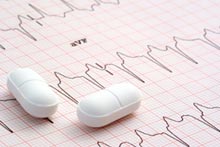“Experts regard osteoporosis as a pediatric disease because the best time to prevent is during childhood and early adolescence,” says Dr. Tim Wood, Executive Vice President of Research and Development at USANA Health Sciences, Inc. “Women put on 50% of their adult bone mineral mass during their teenage years. As such, this is the best time to grow strong, mineral rich bones and the mosteffective way to prevent osteoporosis later in life.” Dr. Wood adds, “We are particularly excited about these findings because they confirm results previously shown in another study conducted in the U.S. at the University of Utah.”
This blog is intended for any readers interested in the latest research on nutritional health as published by the company who the author works for. The company researches from sources of high scientific reputation as well as through their relationship with the Linus Pauling Institute.
Monday, July 19, 2010
Study shows Vitamin D supplements taken early in life help in the prevention of osteoporosis
Sunday, June 27, 2010
60 to 80% of cases of chronic degenerative disease are preventable
Thursday, June 10, 2010
Zinc supplementation may protect against heart disease

Wednesday, June 02, 2010
Lack of sleep may promote obesity

It is known that short-term sleep deprivation increases plasma concentrations of ghrelin (a hormone related to increased appetite) and decreases those of leptin (a hormone related to satiety.)
In a randomized crossover study, researchers studied twelve normally healthy non-obese men to observe the effect of sleep deprivation on energy intake and physical activity. During the first night of each 48-hour session, subjects had either 8 hours (from midnight to 8:00 a.m.) or 4 hours (from 02:00 a.m. to 06:00 a.m.) of sleep. All foods consumed thereafter (jam on buttered toast for breakfast, buffet for lunch, and a free menu for dinner) were eaten ad libitum (with no restrictions.) Physical activity was also recorded. Sensations of hunger, perceived pleasantness of the foods, desire to eat some foods, and sleepiness were also evaluated.
In comparison with the 8-hour sleep session, subjects consumed 559 (22%) more calories on the day after sleep restriction, and hunger was higher before breakfast and dinner. Researchers observed no change in the perceived pleasantness of the foods or in the desire to eat the foods. Physical activity was slightly higher after sleep restriction than after 8 hours of sleep, even though the sensation of sleepiness was more apparent.
In this group of healthy men, one night of reduced sleep led to an increase in food intake and, to a lesser extent, physical activity-related energy expenditure. Although further research is needed to confirm the results of this small study, these results suggest that sleep restriction could be a factor that promotes obesity.
Source: USANA Health Sciences
Wednesday, May 19, 2010
DHA supplementation improves memory in healthy adults with age-related cognitive decline
 New research indicates that regular supplementation with DHA may improve memory and learning in older adults with mild age-related memory loss.
New research indicates that regular supplementation with DHA may improve memory and learning in older adults with mild age-related memory loss.Recent research published online in Alzheimer’s & Dementia: The Journal of the Alzheimer’s Association illustrates a benefit for docosahexaenoic acid (DHA) supplementation in a clinical trial of individuals with age-related cognitive decline (ARC). DHA is a long-chain omega-3 fatty acids found most prominently in algae, fatty fish and fish oil supplements.
Participants included 485 individuals aged 55 and older with complaints of mild memory loss. The subjects were given a daily dosage of 900 milligrams of DHA or a placebo for 6 months. Memory and learning tests were given at the beginning of the study and at 12 and 24 weeks.
At the end of the study period, the group receiving the DHA supplement had improved test scores that correlated with an increase in plasma DHA levels. At 12 weeks there were no significant differences in the test scores of the two groups. However, at 24 weeks the group taking the DHA had a 2-fold reduction in the number of learning and memory errors tested compared to the placebo group.
The results of this study are the first to clinically confirm that DHA meaningfully improves memory and learning functions in healthy adults with age-related cognitive decline. Since it is estimated that up to one-third of the aging population in the U.S. will experience a decline in cognitive function with age, the benefits of a daily DHA supplement can have a significant impact on public health.
Source: Beneficial effects of docosahexaenoic acid on cognition in age-related cognitive decline, Yurko-Mauro K et al, Alzheimers & Dementia 29 April 2010
Source: USANA Health Sciences
Wednesday, May 12, 2010
Soy food & isoflavone intakes reduce breast cancer risk
 A recent study among Chinese women showed that those with the highest intakes of soy foods and soy isoflavones had a significantly lower risk of breast cancer.
A recent study among Chinese women showed that those with the highest intakes of soy foods and soy isoflavones had a significantly lower risk of breast cancer.Research seeking to find a connection between soy food consumption and breast cancer risk has produced conflicting results.
A recent case-control study was conducted to assess the relationship between soy food intake and breast cancer risk according to the estrogen receptor (ER) and/or progesterone receptor (PR) status of breast cancer. Participants included 438 Chinese women with primary breast cancer that were matched by age and residence (rural/urban) with 438 women free of cancer. Dietary intake was assessed by face-to-face interviews using a validated food frequency questionnaire.
Researchers observed a statistically significant inverse association between soy isoflavone and soy protein intake with breast cancer risk. The women in the group with the highest soy isoflavone intake had a 46% decreased cancer risk compared to the group with the lowest intake. Women in the group with the highest soy protein had a 38% reduced cancer risk compared to the lowest intake group. A preventive effect of soy food was found for all subtypes of ER and/or PR status of breast cancer. The inverse association was more evident among premenopausal women.
This study suggests that consumption of soy foods and soy isoflavones may reduce the risk of breast cancer, and that the protective effects of soy do not seem to differ by ER and PR breast cancer status.
Wednesday, May 05, 2010
Multivitamin supplements unrelated to breast cancer risk in large U.S. study
Researchers from Harvard Medical School and Brigham and Women’s Hospital recently evaluated possible associations between multivitamin supplements and risk of breast cancer. At the beginning of the study, 37,920 cancer-free U.S. women aged 45 and older provided detailed information on multivitamin supplement use. Throughout an average of 10 years of follow-up, 1,171 cases of breast cancer were documented.
The use of multivitamin supplements was not associated with an overall risk of breast cancer in this large study group. High frequency of use (at least 6 times per week) and duration of supplementation (current use for at least 20 years) were not associated with an increase in risk compared to non-users. A small reduction in breast cancer risk was seen in multivitamin users who consumed 10 grams/day of alcohol or more. There was also a slight decrease in risk of estrogen receptor negative-progesterone receptor negative breast cancer among multivitamin users.
The researchers stated that although there was no overall statistically significant association between multivitamin use and breast cancer, multivitamins may reduce the risk for women consuming alcohol and in certain estrogen receptor negative cancers.
Saturday, May 01, 2010
Researchers recommend pregnant women take 4,000 IU Vitamin D a day
VANCOUVER, BRITISH COLUMBIA – Taking vitamin D supplements during pregnancy is not only safe for mother and baby, but also can prevent preterm labour/births and infections, according to results of a randomized controlled study to be presented at the Pediatric Academic Societies (PAS) annual meeting in Vancouver, British Columbia, Canada.
In the 1950s and ’60s, people were concerned that vitamin D could cause birth defects, according to Carol L. Wagner, MD, lead author of the study and a pediatric researcher at Medical University of South Carolina. It now is known that vitamin D is important for maternal and infant health, including bone health and immune function.
Recent studies have shown that vitamin D deficiency during pregnancy is a serious public health issue.
“Diet doesn’t provide enough vitamin D, and we don’t go in the sun as much as we need,” Dr. Wagner said.
Therefore, she and her colleagues, including Bruce W. Hollis, PhD, who has worked in the field of vitamin D research for the last 30 years, set out to determine the optimal dose of vitamin D supplements for pregnant women without doing harm.
Researchers randomized 494 pregnant women at 12-16 weeks’ gestation into three treatment groups. Group one received 400 International Units (IU) of vitamin D a day until delivery; group two received 2,000 IU and group three received 4,000 IU. The women were evaluated monthly to ensure safety.
“No adverse events related to vitamin D dosing were found in any of the three arms of the study,” Dr. Wagner said.
Investigators also looked at the effects of vitamin D supplementation on complications during pregnancy, including preeclampsia, gestational diabetes, infections, and preterm labor and birth.
“The spectacular part of the study was it showed women replete in vitamin D had lower rates of preterm labor and preterm birth, and lower rates of infection,” Dr. Wagner said.
The greatest effects were seen among women taking 4,000 IU of vitamin D per day. Therefore, the researchers recommend this daily regimen for all pregnant women.
Dr. Wagner will discuss the two parts of the study in separate presentations. The outcomes of vitamin D supplementation during pregnancy will be presented on Saturday, May 1, and the safety of vitamin D supplementation will be presented on Sunday, May 2.
Reporters wanting to interview any of the speakers should call the PAS Press Office at 778-331-7694. Reporters who wish to attend the session must first check in with the PAS Press Office at the Vancouver Convention & Exhibition Centre to receive press credentials.
Thursday, April 29, 2010
Diets high in B-vitamins reduce risk of death from cardiovascular disease
 New research out of Japan reports an inverse association between a diet rich in B-vitamins and risk of death from cardiovascular disease.
New research out of Japan reports an inverse association between a diet rich in B-vitamins and risk of death from cardiovascular disease.Begun in 1988, the Japan Collaborative Cohort Study (JCCS) examined the dietary patterns of 130,000 Japanese adults over nearly ten years. Analyses continue to be performed on the enormous dataset generated by this long-term, large-scale study.
In the latest JCSS analysis (published in the journal Stroke in April 2010), researchers compiled information on dietary levels of folate, vitamin B6, and vitamin B12 as reported in JCSS food frequency questionnaires. They then examined possible correlations between dietary intake of these nutrients and risk of death from common cardiovascular diseases. Data from 23,119 men and 35,611 women (age 40-79 years) met the study criteria, making this one of the largest sample sizes to date for this type of analysis.
Based on the available data, dietary folate and vitamin B6 intakes were inversely associated with mortality from heart failure for men. (Inverse association means that higher dietary levels of folate and vitamin B6 are connected with lower risk of disease.) For women, folate and vitamin B6 intakes were inversely associated with mortality from stroke and coronary heart disease, as well as total cardiovascular disease incidence. Interestingly, these associations remained statistically significant even after adjusting for common cardiovascular disease factors. A statistically significant association could not be determined for vitamin B12 intake and risk of death from cardiovascular disease.
This large-scale collaborative study from Japanese researchers correlates with similar results from the National Health and Nutrition Examination Surveys (NHANES) performed in the United States, further confirming the benefits of a diet high in certain B-vitamins.
Wednesday, April 21, 2010
The benefits of exercise in postmenopausal women

Wednesday, April 07, 2010
Inadequate DHA intake in infants is related to decreased visual acuity

Wednesday, March 31, 2010
Osteoarthritis symptoms improve with regular walking & glucosamine sulfate supplementation

Friday, March 26, 2010
Shining Light on the D-lightful Health Benefits of Vitamin D

Michael Holick, Ph.D., M.D.
Boston University Medical Center, Boston, MA
 Shining Light on the D-lightful Health Benefits of Vitamin D
Shining Light on the D-lightful Health Benefits of Vitamin D(19 minutes) | View Transcript
More information on vitamin D:
- Vitamin D information from the LPI Micronutrient Information Center
Thursday, March 25, 2010
Low vitamin B6 status is related to increased oxidative stress

Wednesday, March 17, 2010
Review of omega-3 fatty acids & heart disease risk
Wednesday, March 03, 2010
Vitamin D levels linked to healthy lung function

Wednesday, February 24, 2010
Vitamin D deficiency associated with cardiovascular disease prevalence

Wednesday, February 10, 2010
Internet-based lifestyle program improves body composition & markers of metabolic health

Wednesday, February 03, 2010
Higher intakes of fibre help prevent weight gain & increases in waist circumference

Wednesday, January 27, 2010
Moderate soy intake improves survival in breast cancer patients

Thursday, January 21, 2010
Fitness reduces the risk of death in men with metabolic syndrome

Wednesday, January 13, 2010
Insufficient vitamin D levels negatively affect strength in girls

Wednesday, January 06, 2010
Probiotics help reduce upper respiratory tract infections in day care children
